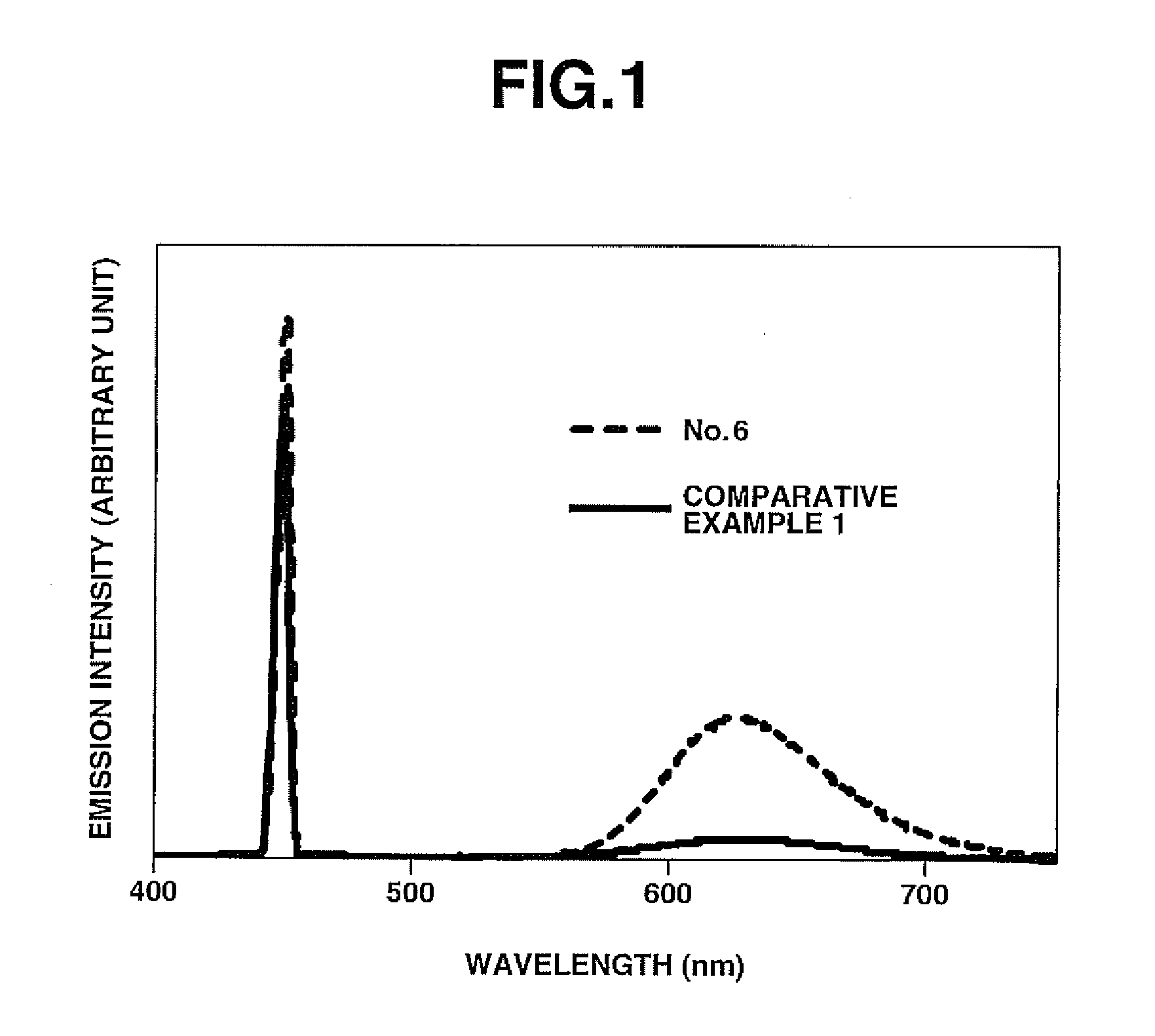Phosphor-Dispersed Glass and Method for Producing Same
a technology of phosphor-dispersed glass and phosphor-dispersed glass, which is applied in the direction of red component light (wavelength: 600 nm) that is not sufficient, and can solve the problems of inhibiting the operation of led elements, degradation of resins, and insufficient cyan component light (wavelength: up to 500 nm) to achieve the effect of suppressing the deactivation of phosphor
- Summary
- Abstract
- Description
- Claims
- Application Information
AI Technical Summary
Benefits of technology
Problems solved by technology
Method used
Image
Examples
example 1
[0066]Fluoride glass materials were obtained by using and mixing raw fluoride compounds at respective mol % as shown in Nos. 1 to 9 of TABLE 1, placing the raw glass compound mixture in a crucible of glassy carbon, melting the raw glass compound mixture at 980° C. for 1 hour in an atmosphere of 99% nitrogen and 1% chloride as a partial pressure component, and then, rapidly cooling the glass melt.
[0067]The softening temperature (Ts) of the respective fluoride glass materials was measured. The measurement of the softening temperature (Ts) was done with the use of a wide-range viscometer (WRVM-313 available from OPT Corporation). Each of the obtained fluoride glass materials had a softening temperature (Ts) of 500° C. or lower.
[0068]Subsequently, each of the obtained fluoride glass materials was pulverized into a powder of glass particles with a median diameter d50 of 10 μm, following by adding thereto 5 mass % of particles of nitrogen phosphor (CaAlSiN3:Eu2+, luminescence center wavel...
example 2
[0081]A sample was formed in the same manner as in Example 1 by using the same fluoride glass material as the sample No. 6 of TABLE 1 and using YAG-Ce phosphor in place of the nitride phosphor.
[0082]The internal quantum efficiency of the YAG-Ce phosphor before encapsulation in the glass material was measured to be 83%. By contrast, the internal quantum efficiencies of the glass sample of Example 2 was 74%. It has been shown by these results that: it is possible for the fluoride glass material of the present invention to suppress deactivation of the phosphor; and the fluoride glass material of the present invention is usable for encapsulation of an oxide phosphor.
PUM
| Property | Measurement | Unit |
|---|---|---|
| Temperature | aaaaa | aaaaa |
| Temperature | aaaaa | aaaaa |
| Fraction | aaaaa | aaaaa |
Abstract
Description
Claims
Application Information
 Login to View More
Login to View More - R&D
- Intellectual Property
- Life Sciences
- Materials
- Tech Scout
- Unparalleled Data Quality
- Higher Quality Content
- 60% Fewer Hallucinations
Browse by: Latest US Patents, China's latest patents, Technical Efficacy Thesaurus, Application Domain, Technology Topic, Popular Technical Reports.
© 2025 PatSnap. All rights reserved.Legal|Privacy policy|Modern Slavery Act Transparency Statement|Sitemap|About US| Contact US: help@patsnap.com

